Iconography is the study of symbols, themes, and visual elements in art, offering insights into cultural, religious, and historical contexts. This guide explores its significance, techniques, and modern applications, providing a comprehensive understanding of iconography through detailed PDF resources.
Definition and Scope of Iconography
Iconography refers to the study and interpretation of symbols, images, and themes in art, literature, and culture. It involves analyzing visual elements to uncover their meanings, often rooted in historical, religious, or cultural contexts. The scope of iconography extends across various disciplines, including art history, theology, anthropology, and digital design. It examines how symbols convey messages, evoke emotions, or represent ideas. Iconography can focus on specific motifs, such as religious icons, mythological figures, or contemporary logos. Its applications range from understanding medieval artworks to designing modern-day icons for digital interfaces. By decoding visual language, iconography bridges the gap between creators and audiences, offering insights into the intentions behind visual compositions. This field is essential for preserving cultural heritage and adapting symbolic communication in a digital age.
Significance of Iconography in Art and History
Iconography holds profound significance in art and history as a tool for understanding cultural, religious, and social narratives. It serves as a visual language, conveying complex ideas, beliefs, and values through symbols and imagery. By analyzing iconography, historians and art scholars can uncover the context and intentions behind artworks, revealing insights into the societies that created them. Iconography bridges the past and present, allowing contemporary audiences to connect with historical traditions. Its role in preserving cultural heritage is invaluable, as it documents the evolution of symbols and themes over time. Furthermore, iconography influences contemporary art and design, ensuring the continuity of visual storytelling. Its study enriches our understanding of human expression and the enduring power of images to communicate meaning across generations.
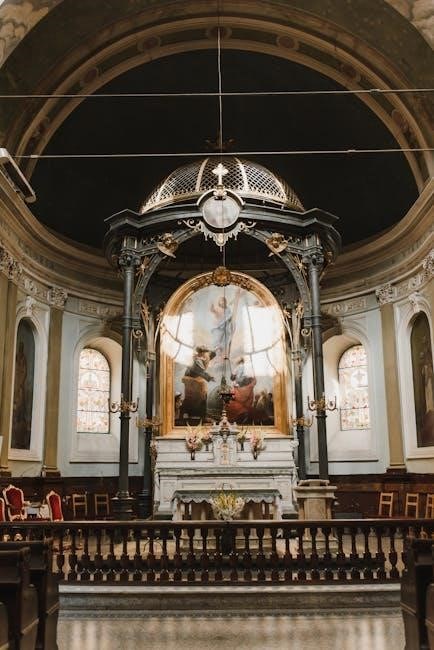
Historical Context of Iconography
Iconography has deep roots in medieval art and culture, as seen in journals like Studies in Iconography, which explore imagery from the fourth century to 1600. PDF resources preserve this historical context for modern study, offering insights into the evolution of symbols and themes across centuries.
Early Christian Iconography
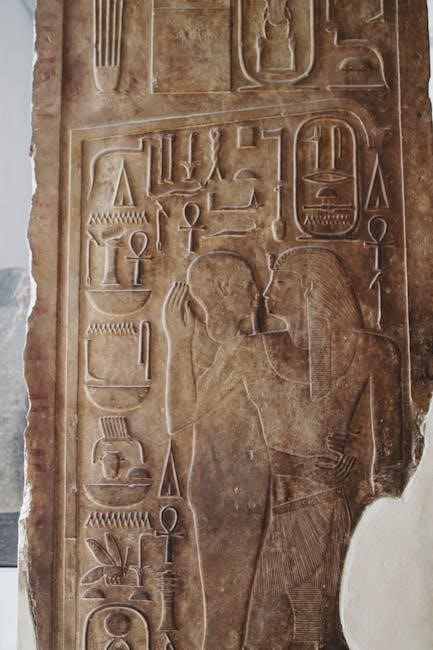
Early Christian iconography emerged as a powerful tool for conveying religious beliefs, often depicting themes of salvation, divine nature, and the life of Jesus Christ. Symbols such as the cross, dove, and fish became central motifs, representing resurrection, peace, and Christianity itself; These images were frequently used in catacombs, mosaics, and illuminated manuscripts, serving as visual narratives for a largely illiterate population. The art often blended Roman stylistic influences with Christian theology, creating a unique visual language. Over time, iconography evolved to include representations of saints and biblical scenes, reinforcing the faith and unity of the early Christian community. Today, PDF resources and studies like the Studies in Iconography journal provide detailed insights into this historical art form, preserving its legacy for modern scholars and enthusiasts alike.
Medieval Iconography and Symbolism
Medieval iconography was deeply rooted in religious and symbolic meanings, serving as a visual language to convey moral and spiritual messages. Common motifs included the lamb representing innocence, the lion symbolizing strength, and the dove embodying peace. These symbols were often used in illuminated manuscripts, stained glass, and church murals to teach biblical stories to illiterate audiences. Color played a significant role, with gold often signifying divine light and red symbolizing martyrdom or sacrifice. The composition of these artworks was highly structured, with central figures like Christ or the Virgin Mary surrounded by saints and angels. Symbolism extended to architectural elements, such as the use of the crucifix in churches. Medieval iconography not only reflected religious devotion but also reinforced social and moral values, making it a cornerstone of medieval artistic expression.
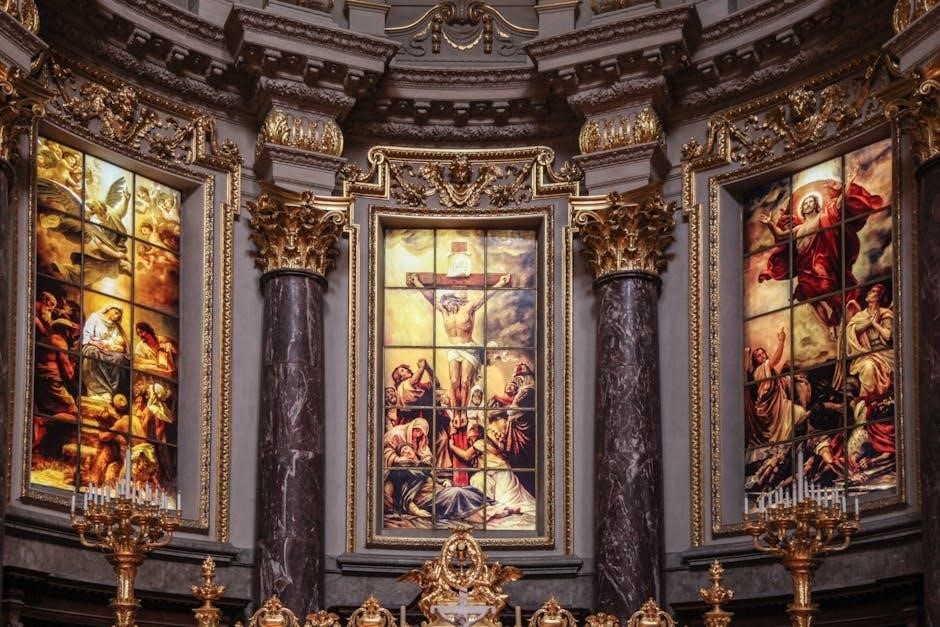
Renaissance and Baroque Iconography
The Renaissance and Baroque periods transformed iconography by blending religious themes with classical influences and emotional intensity. During the Renaissance, artists like Leonardo da Vinci and Michelangelo incorporated symbolic elements, such as the use of light and shadow, to convey deeper meanings. Iconography became more naturalistic, with humanist ideals influencing depictions of biblical and mythological subjects. The Baroque era intensified this with dramatic compositions and exaggerated emotions, as seen in works by Caravaggio. Symbols like the Virgin Mary, crucifixes, and saints remained central, but their presentation became more dynamic. This period also saw the rise of allegorical iconography, where complex moral and philosophical ideas were visually represented. The fusion of art and symbolism in these eras enriched iconography, making it a powerful tool for storytelling and emotional engagement.
Key Elements of Iconography
Iconography relies on symbols, colors, and composition to convey meaning. These elements work together to create visual narratives, making iconography a powerful tool for communication and storytelling.
Symbols and Their Meanings
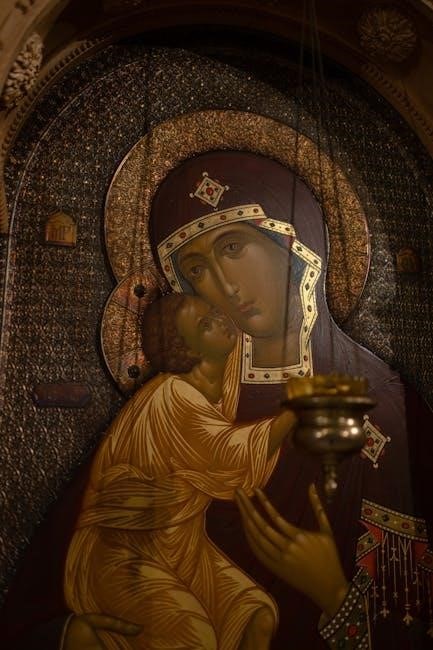
In iconography, symbols are essential for conveying deeper meanings. For instance, the cross represents sacrifice and salvation in Christian art, while the lotus symbolizes spiritual growth in Buddhist traditions. These visual elements are often deeply rooted in cultural and religious contexts, serving as a bridge between the viewer and the message. By analyzing symbols, one can uncover the underlying themes and narratives within an artwork. This process requires understanding the historical and cultural background of each symbol, as their meanings can evolve over time. Effective use of symbols enhances the impact of iconographic art, making it a powerful tool for communication and storytelling across various traditions and mediums. This section explores the significance of symbols in iconography, providing insights into their roles and interpretations.
Color as a Tool in Iconography
Color plays a vital role in iconography, serving as a powerful communicator of themes, emotions, and symbolic meanings. In religious and cultural art, specific hues are often reserved for particular subjects to convey deeper significance. For example, gold is frequently used to denote divinity or sacredness, while blue may symbolize heaven or tranquility. Red often represents passion or sacrifice, as seen in depictions of martyrs. The strategic use of color enhances the visual impact of iconographic works, guiding the viewer’s interpretation. It also creates harmony and balance, drawing attention to central figures or motifs. By employing color intentionally, artists ensure their creations resonate with the intended message, making it a cornerstone of iconographic expression. This section explores how color contributes to the narrative and emotional depth in iconography, highlighting its universal and timeless importance.
Composition and Layout in Iconographic Art
Composition and layout are essential elements in iconographic art, as they guide the viewer’s eye and convey meaning. Icons are often meticulously planned, with symmetry and balance playing key roles. Central figures or scenes are typically positioned to draw immediate attention, while secondary elements support the narrative. Negative space is used strategically to avoid clutter and emphasize focal points. The arrangement of figures, symbols, and backgrounds follows traditional patterns, ensuring consistency and recognizability. For example, religious icons often place holy figures in a triangular composition, symbolizing harmony and divine order. The layout also incorporates visual hierarchy, with size and placement indicating importance. These compositional techniques ensure that the artwork communicates its intended message effectively, making iconography both aesthetically pleasing and deeply symbolic. This structure reinforces the spiritual and cultural significance of the art, connecting the viewer to its underlying themes.

Iconography in Religious Art
Religious iconography uses symbols and colors to convey spiritual beliefs and narratives, creating visually powerful representations of divine themes across cultures and faiths, unifying the sacred and the visual.
Eastern Orthodox Iconography
Eastern Orthodox iconography is a sacred art form deeply rooted in theology and tradition, serving as a bridge between the divine and the earthly realms. Icons are not merely decorative but are considered windows to the spiritual world, used in prayer and worship. They often depict Christ, the Virgin Mary, saints, and biblical scenes, rendered with precise symbolism and formalized styles. The use of gold leaf backgrounds signifies the heavenly realm, while the inverse perspective draws the viewer into the sacred space. Icons are created following strict guidelines to ensure consistency and reverence, reflecting the Church’s teachings. The process of painting icons is a meditative act, emphasizing prayer and spiritual intention. Eastern Orthodox iconography has preserved its traditions for centuries, maintaining its role as a vital element of faith and devotion in the Orthodox Church.
Catholic Iconography and Its Traditions
Catholic iconography is a vibrant and deeply symbolic art form that reflects the theological and liturgical traditions of the Catholic Church. Rooted in early Christian art, it evolved into a distinct style emphasizing devotion, storytelling, and the veneration of saints. Icons often depict the Virgin Mary, Jesus Christ, and various saints, each accompanied by specific attributes that highlight their divine roles. The use of halos, crosses, and sacred gestures underscores the sacred nature of the subjects. Catholic iconography also incorporates intricate details like robes, crowns, and symbols tied to biblical narratives. The art form is closely tied to liturgical practices, with icons serving as focal points for prayer and meditation. Traditional techniques, such as egg tempera on wood, are often employed to preserve the spiritual essence of the work. This rich tradition continues to inspire contemporary artists and remains a cornerstone of Catholic religious expression.
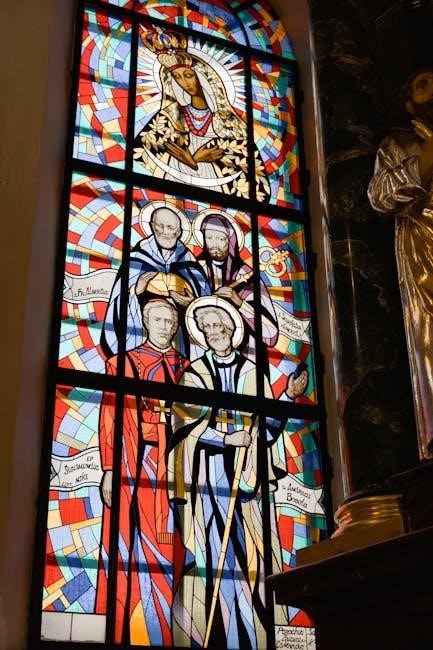
Buddhist and Hindu Iconography
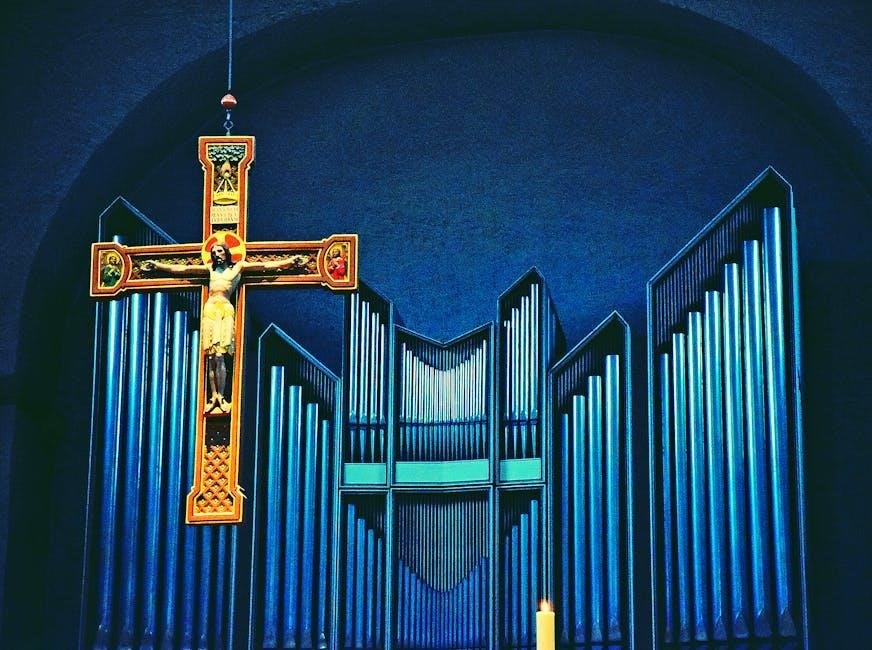
Buddhist and Hindu iconography are deeply rooted in spiritual and philosophical traditions, conveying complex meanings through visual representations. In Buddhist art, the Buddha is often depicted in meditative poses, with hand gestures (mudras) symbolizing teachings like compassion and wisdom. The lotus flower, Wheel of Dharma, and bodhi tree are common symbols, representing enlightenment, spiritual growth, and the path to Nirvana. Hindu iconography, meanwhile, features a vast pantheon of deities, each with distinct attributes. For instance, Shiva is often shown with a trident, Vishnu with a discus, and Ganesha with an elephant head. These icons embody divine powers and cosmic roles, while their multiple limbs and weapons signify omnipotence. Both traditions emphasize the use of color, posture, and ritualistic depictions to evoke devotion and spiritual connection, making iconography a cornerstone of religious and cultural expression in these faiths.
Modern Applications of Iconography
Modern iconography thrives in branding, cultural preservation, and education, leveraging symbols to convey meaning in diverse contexts, from spirituality to marketing, ensuring timeless relevance.
Iconography in Digital Design
Iconography plays a pivotal role in modern digital design, enhancing user interfaces and experiences through visual storytelling. Icons serve as universal communication tools, transcending language barriers to convey ideas instantly. Digital designers leverage iconography to create intuitive navigation systems, app interfaces, and websites, ensuring clarity and accessibility. The use of consistent icon sets helps establish brand identity and user trust. In web and mobile design, icons are often micro-interactions, animating to provide feedback or guide user actions. Tools like SVG and icon fonts enable scalable, high-resolution visuals across devices; Additionally, iconography supports accessibility, aiding visually impaired users through recognizable symbols. As design trends evolve, iconography remains a cornerstone of digital creativity, blending aesthetics with functionality seamlessly.
Contemporary Artists and Iconography
Contemporary artists have redefined iconography by blending traditional symbols with modern aesthetics; Many use digital tools to create vibrant, dynamic icons that reflect current societal themes. Artists like Takashi Murakami merge Japanese pop culture with religious imagery, while Kehinde Wiley reinterprets historical icons through bold, colorful portraits. Street artists such as Banksy employ iconography to critique political and social issues, using universal symbols to convey powerful messages. Digital artists leverage software to design intricate icons, often combining traditional techniques with contemporary mediums. This fusion of old and new allows iconography to remain relevant, inspiring fresh interpretations and emotional connections. Contemporary iconography not only preserves cultural heritage but also challenges viewers to rethink traditional narratives in a modern context.

Tools and Software for Creating Iconography PDFs
Adobe Illustrator, Canva, and Inkscape are popular tools for designing iconography. Affinity Designer offers professional-grade features. These software options enable precise vector graphics and high-quality PDF exports.
Adobe Illustrator for Icon Design
Adobe Illustrator is a powerful tool for creating iconography, offering advanced vector graphics capabilities. It provides precise control over shapes, lines, and colors, making it ideal for detailed icon designs. The software includes a wide range of tools, such as the Pen Tool, Shape Tools, and Layer Management, which simplify the creation of intricate compositions. Illustrator also supports custom brushes and effects, allowing for unique and creative icon styles. Its ability to work with scalable vector graphics ensures high-quality outputs at any resolution, making it perfect for both digital and print applications. Additionally, Illustrator integrates seamlessly with other Adobe products, enabling a smooth workflow for designing and exporting iconography PDFs. This makes it a go-to choice for professional designers and artists focusing on iconography.
Canva and Other Graphic Design Tools
Canva has emerged as a versatile platform for iconography design, offering user-friendly features for creating visually appealing icons. Its extensive library of templates, fonts, and graphics makes it accessible for both professionals and novices. Canva’s drag-and-drop interface simplifies the process of arranging elements, while its customization options allow for tailored designs. Other tools like Figma and Sketch also provide robust solutions for iconography, particularly for vector-based designs. These platforms support collaboration, making them ideal for teams working on iconography projects. Additionally, tools like Affinity Designer and CorelDRAW offer advanced features for intricate details and precision. These graphic design tools collectively enable the creation of high-quality icons, which can be seamlessly integrated into PDFs for professional and artistic purposes. They cater to diverse design needs, ensuring accessibility and creativity in the realm of iconography.
Resources for Learning Iconography
Discover workshops, tutorials, and online communities dedicated to iconography. Explore extensive libraries of iconography PDFs and guides for mastering the art of symbolic representation in various cultural contexts.
Online Courses and Tutorials
Explore a wide range of online courses and tutorials dedicated to iconography, offering in-depth lessons on creating and interpreting icons. Platforms like Coursera, Udemy, and Skillshare provide courses on icon design, symbolism, and cultural contexts. Learn about vector design, color theory, and composition specifically for iconography. Many courses include downloadable resources like iconography PDFs, featuring practical exercises and case studies. These tutorials cater to both beginners and advanced learners, covering topics from historical iconography to modern digital applications. Gain insights into religious and secular symbols, their meanings, and their evolution over time. Interactive forums and communities further enhance the learning experience, allowing students to share their work and receive feedback. These resources are essential for mastering the art and science of iconography in a structured and engaging manner.
Books and Journals on Iconography
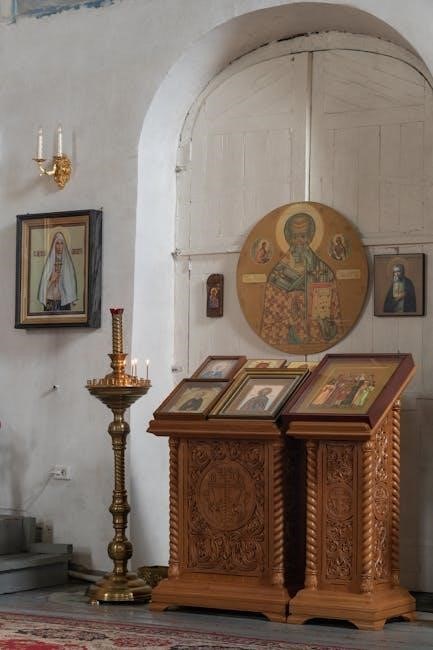
Discover a wealth of books and journals dedicated to the study and practice of iconography, offering deep insights into its historical, cultural, and artistic dimensions. Titles like “The Iconography of Power” and “Reading Icons” provide comprehensive analyses of symbols, themes, and their interpretations. Journals such as Iconographica and Arts & Theology publish scholarly articles on religious and secular iconography, exploring their evolution and significance. These resources often include high-quality visuals and downloadable iconography PDFs, making them invaluable for researchers and artists. Libraries and online archives like JSTOR and Google Books offer access to classic and contemporary texts, ensuring that learners can explore the subject in depth. Whether focusing on religious art or modern design, these books and journals are essential for understanding the nuances of iconography.
Iconography PDFs serve as vital resources for preserving artistic traditions, offering insights into cultural and religious symbolism. They bridge the past and present, inspiring future creative expressions and historical understanding.
The Future of Iconography in the Digital Age
The digital age has transformed iconography, offering new ways to create, share, and interpret symbols. Digital tools like Adobe Illustrator and Canva enable precise design, while AI enhances creativity. Iconography PDFs are now widely used for education and preservation, making cultural heritage accessible globally. Online platforms and social media have democratized iconography, allowing artists to experiment with traditional motifs in modern contexts. Virtual reality and augmented reality are opening new dimensions for interactive iconographic experiences. Despite these advancements, the core essence of iconography—its symbolic meaning and emotional resonance—remains unchanged. As technology evolves, iconography continues to bridge the gap between ancient traditions and contemporary innovation, ensuring its relevance in a rapidly changing world. The future promises a dynamic interplay between digital innovation and timeless artistic expression.
Preserving Iconographic Heritage Through PDFs
Iconography PDFs play a vital role in preserving cultural and artistic heritage for future generations. By digitizing rare texts, manuscripts, and artworks, PDFs ensure that fragile physical materials are safeguarded from deterioration. High-resolution images and detailed descriptions in PDFs allow scholars and enthusiasts to study iconography with precision. Additionally, PDFs enable global accessibility, making iconographic resources available to anyone with an internet connection. Institutions and digital archives increasingly use PDFs to catalog and share their collections, fostering collaboration and research. This format also supports interactive features, such as zoom capabilities and annotations, enhancing the learning experience. Through PDFs, the world’s iconographic treasures are not only preserved but also made more accessible, ensuring their appreciation and study endure in the digital era.

